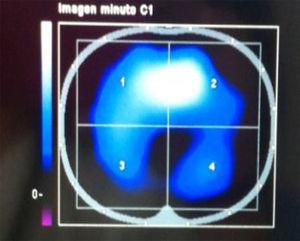El mayor beneficio del tratamiento trombolítico en el infarto agudo de miocardio (IAM) se obtiene cuando se administra dentro de las dos primeras horas de evolución. Pese a la rapidez con que se realiza este tratamiento en nuestro Hospital, sólo un 15%-20% de las trombolisis se realizaban dentro de estas dos primeras horas, debido fundamentalmente a la demora en la llegada del paciente al hospital. Por este motivo hemos desarrollado el Plan de Actuación Conjunta en el Infarto Agudo de Miocardio (PACIAM), con el objetivo de aumentar el número de trombolisis precoces, mediante un protocolo de trombolisis extrahospitalaria que garantizase su seguridad y fiabilidad.
The main benefit from thrombolytic treatment in acute myocardial infarction (AMI) is obtained when administered within the first two hours of symptoms. Although thrombolysis is timely started upon arrival of the patient to our hospital, only 15%-20% were started within these two hours, mainly because the delay in the arrival of the patient to hospital. For this reason we developed a Joint Management Plan of Acute Myocardial Infarction, with the objective of increasing early thrombolysis, using an pre-hospital thrombolysis protocol warranting security and reliability




